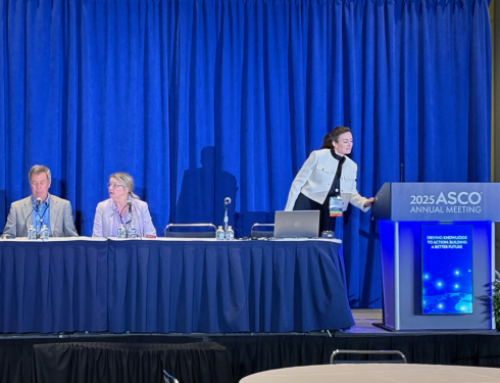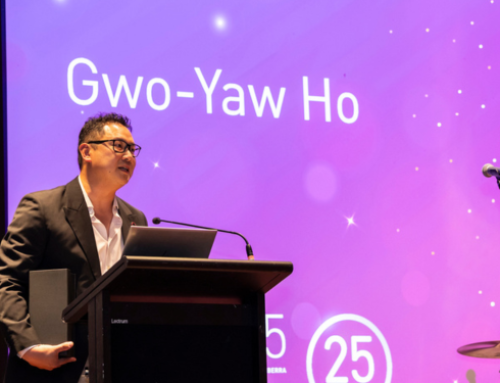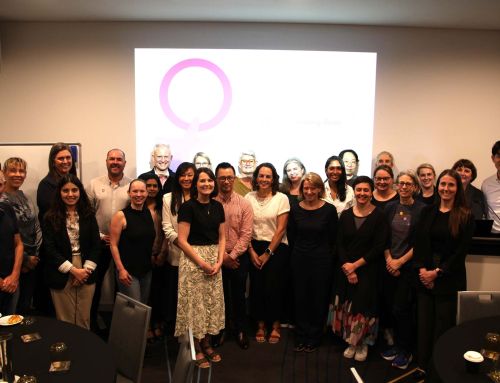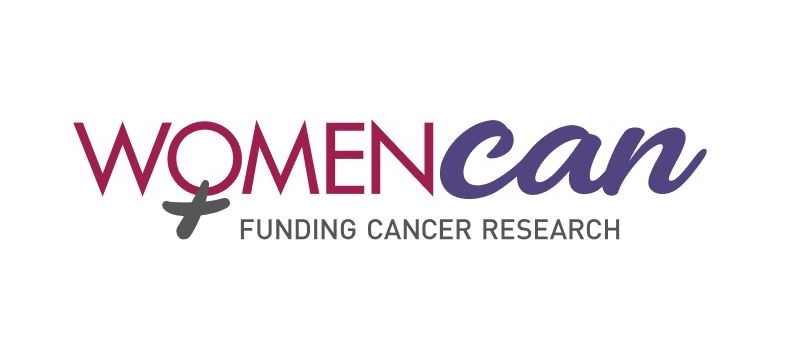Led by ANZGOG co-founder Professor Michael Friedlander AM, PARAGON was one of ANZGOG’s first practice-changing studies. The publications arising from the insights and data collected because of this pivotal trial continue to contribute to research on rare gynaecological cancers for the benefit of patients.
PARAGON pioneered the novel clinical trial design concept of the ‘basket’ trial. This allowed recruitment of patients with different types of rare gynaecological tumours within a single trial, whereas standard trial design requires a new study for each tumour type. The traditional study design is often prohibitive in terms of the amount of time and money it takes to deliver results.
PARAGON opened to recruitment in 2012, recruiting over 330 patients – the largest rare tumour cohort in the world.
What was the focus of PARAGON?
PARAGON was an investigator-initiated trial led by ANZGOG and carried out with the support of the NHMRC Clinical Trials Centre at the University of Sydney and in collaboration with clinician researchers in the United Kingdom and Belgium.
The trial included seven separate phase 2 trials embedded within a single protocol.
“PARAGON was a trial with a design that was ahead of its time when I proposed the study in 2008. I was interested in running clinical trials in rare cancers but there

were many barriers to doing so. Not least of these were the reluctance of investigators to
consider opening trials in their centres due to the time, effort and associated costs when they knew they were only likely to recruit a few patients. I thought we could overcome this major barrier using a basket design. Although I didn’t call it that at the time, in essence this is what PARAGON was.”
Professor Michael Friedlander AM, Principal Investigator of PARAGON
PARAGON recruited 330 women worldwide. All women had recurrent gynaecological cancers and shared one common feature: their cancers were oestrogen receptor (ER) and/or progesterone receptor (PR) positive and may therefore potentially respond to anti-oestrogens.
What was new about PARAGON?
PARAGON was the first prospective trial of hormonal therapy (anastrozole) in women with rare gynaecological cancers.
PARAGON demonstrated that it is possible to carry out trials in patients with uncommon / rare gynaecological cancers. The basket design meant a single submission to an ethics committee and the potential to recruit many more patients to the study, which made it very attractive to centres.
What did PARAGON find?
A key finding was that the objective response rates in cancers such as endometrial stromal sarcomas and granulosa cell tumours were much lower than suggested by the literature (which at the time was made up of retrospective case series and case reports).
PARAGON was also the first prospective trial of hormonal therapy in low-grade serous cancer and confirmed the results of retrospective case series.
What impact has PARAGON had?
PARAGON has provided great insight into the potential benefit patients might receive from aromatase inhibitors across a diverse array of ER/PR-positive gynaecological cancers and clinical scenarios. It guides clinician’s treatment recommendations and informs patients of the risks and benefits of this treatment in a way that was not possible prior to these results.
The trial’s collaborative group has published the benefit of anastrazole in terms of cancer responses, as well as in preservation of quality of life in patients with:
- Platinum-resistant/refractory ovarian cancer (Bonaventura et al. 2017)
- Asymptomatic biochemical relapse of ovarian cancer (Kok et al. 2019)
- Low grade or serous borderline ovarian cancer (Tang et al. 2019)
- Granulosa cell/sex-cord stromal tumours of the ovary (Banerjee et al. 2021)
- Recurrent endometrial cancer (Mileshkin et al. 2021)
- Low-grade endometrial stromal sarcoma (Friedlander et al. 2021)
Any lessons learnt?
As with any trials, there were of course some unforeseen difficulties encountered that hindered the answering of key research questions.
“A key lesson was that we should have mandated the provision of a tumour block from initial surgery as a requirement for eligibility to the study. It is very difficult to obtain tumour tissue after patients have been treated and this has impeded the important translational research component. This has been a formidable barrier to overcome but I am committed to seeing it through.”
Professor Michael Friedlander AM
Next steps
The PARAGON study has set the stage for two new ANZGOG initiatives.
First is ANZGOG’s Ovarian cancer Alliance for SIgnal-Seeking (OASIS) clinical trials program Initiative. The OASIS Initiative is a collaborative research program between ANZGOG and the Australian Ovarian Cancer Study (AOCS) to undertake small signal seeking trials that show sufficient evidence of clinical activity to allow larger randomised trials. Read more about the OASIS Initiative.
The second is PARAGON II. This study builds upon the successful foundation and collaborative relationships of PARAGON and, in a similar group of patients as the PARAGON study, incorporates the use of anastrazole with those medications that have been recently successful overcoming Oestrogen-receptor therapy resistance (CDK4/6 and PIK3CA inhibitors) in the treatment of ER/PR+ve breast cancers. Associate Professor Chee Lee leads this trial which has successfully secured MRFF funding, and is now open to recruitment. Read more about PARAGON-II.
Whilst PARAGON cemented ANZGOG’s position at the forefront of innovative trial design, through the hard work of ANZGOG members and collaborators, PARAGON II will continue this tradition for a group of patients who traditionally would have been unable to access the benefits of a clinical trial.
“The most important learning for me personally was that trials such as PARAGON can only be carried out with international collaboration. The experience has demonstrated the importance of working with a committed team to achieve success.”
Professor Michael Friedlander AM
To find out more about ANZGOG’s PARAGON II, watch this video where Assoc Prof Chee Lee explains the study.










